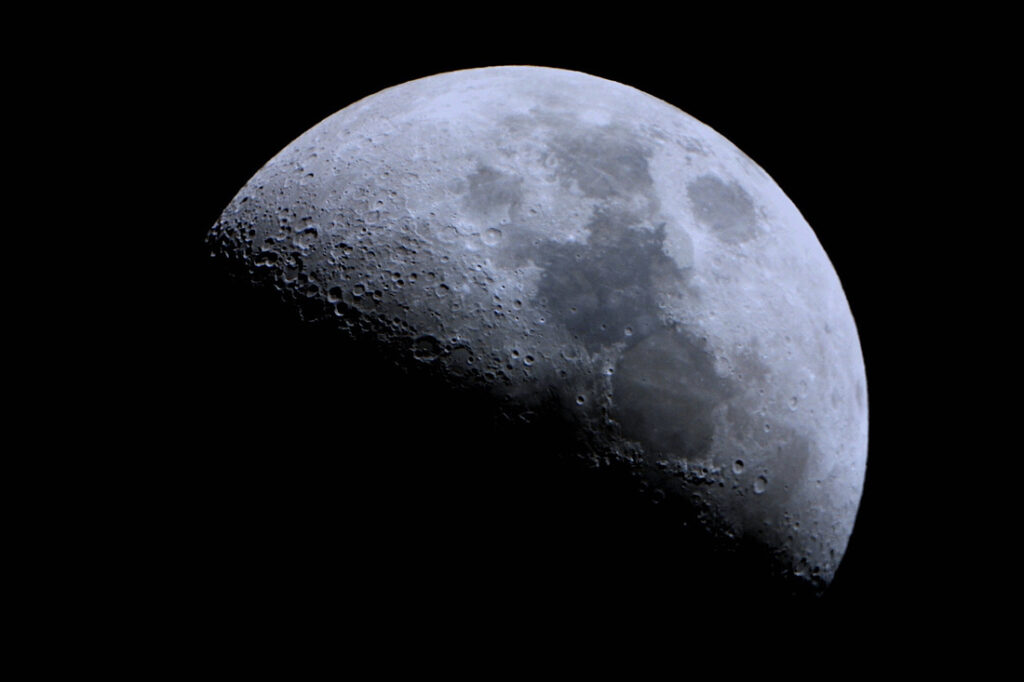The Moon goes through different phases over the course of a month, but few could explain why. The most common explanation is that the phases represent the effect of the Earth's shadow. This is incorrect. Understanding lunar phases requires an awareness of two fundamental facts. First, one-half of the Moon is always facing the Sun, and this half is fully illuminated. Second, the portion of this illuminated half that can be seen from Earth varies over the course of the Moon's 29.5-day orbit about the Earth, and this explains the different phases of the Moon as seen from Earth.
The only time that the Moon's fully illuminated half is seen from Earth is at "Full Moon." The above image depicts the Moon at "First Quarter" phase, which represents the portion of the illuminated half of the Moon that can be seen from Earth at about one-fourth of its 29.5-day orbit around the Earth. A week later, we see a "Full Moon" (more accurately, a "half Moon," since when the Moon appears "full" from Earth it is only half way in its orbit around the Earth).

